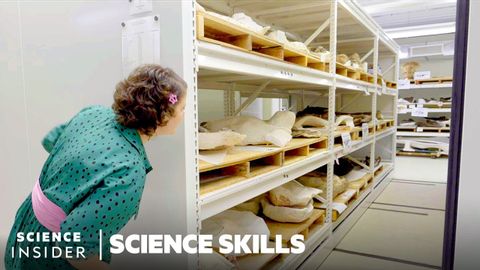我們通過溶解化石來證明恐龍是溫血動物|科學技能 (We Dissolved Fossils To Prove Dinosaurs Were Warm Blooded | Science Skills)
 沒有此條件下的單字
沒有此條件下的單字- adv.按照字面上地;(用于强调)确实地,真正地;幾乎
US /ˈprɛznt/
・
UK /'preznt/
- adj.出席;在場的;目前的
- n.正在進行的;現在時態;目前的;禮物
- v.t.介紹;主持;介紹;展現;贈送
- v.i.出現
US /mɪˈtæbəˌlɪzəm/
・
UK /məˈtæbəlɪzəm/
US /ˈdɛmənˌstret/
・
UK /'demənstreɪt/
- v.t./i.顯示;表露;遊行;演示;證實; 展示
